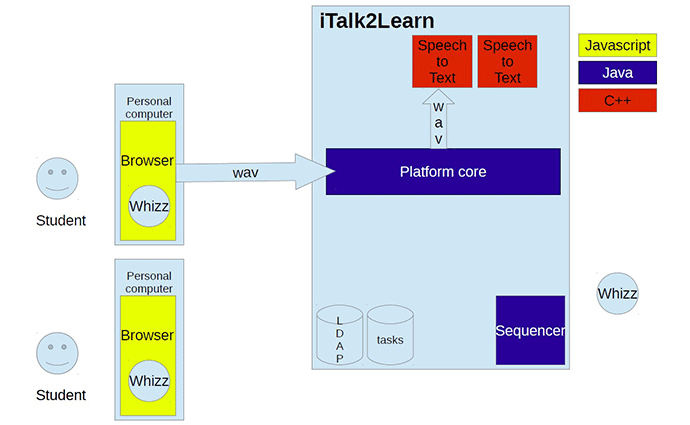WP4: Deployment and Integration
The overall aim of this work package is to provide a flexible and scalable infrastructure for the elements of the system (that are developed in the other work packages), so that those elements can be exchanged independently from each other and eventually be replaced by other elements, providing a testbed for future technologies. In summary, the main goal of this work package is to define the interfaces of the elements of the system and their interplay. These elements include:
- The learning content developed or adapted in Work Package 1 (i.e. Whizz exercises, Fraction Tutor exercises, and exploratory activities)
- The intelligent components developed in Work Package 2 for recommendation and support
- The intuitive interaction features designed and developed in Work Package 3
Moreover, this requires creation of the necessary infrastructure that supports and embeds the components of Work Package 1 to Work Package 3 (i.e. data storage and knowledge representation).

A break-down of the objectives of this work package includes:
- Provision of a basic platform for the deployment of a tutoring system early in the project, so that this can be used to collect an initial child-tutor interaction corpus in Work Package 1.
- Design and development of a generic and flexible robust learning support platform that is able to deploy structured and exploratory learning activities to students and allows for integration of plugins for:
- Access channels that provide interaction with the system
- Interaction collectors that gather student/tutor and student/student interactions in rich logfiles
- Problem descriptors that associate problems and activities (exploratory or not) with competencies involved in their solution and general metadata
- Solution strategy descriptors that associate problems with typical steps employed by humans working towards a solution (including correct steps as well as misconceptions)
- Student profile builders that aggregate student/tutor interactions to build learner models
- Adaptive control of single-student tutoring. For example, selection of the next problem/activity that will allow the student to learn most effectively, and selection of interventions to help the student most in his current situation